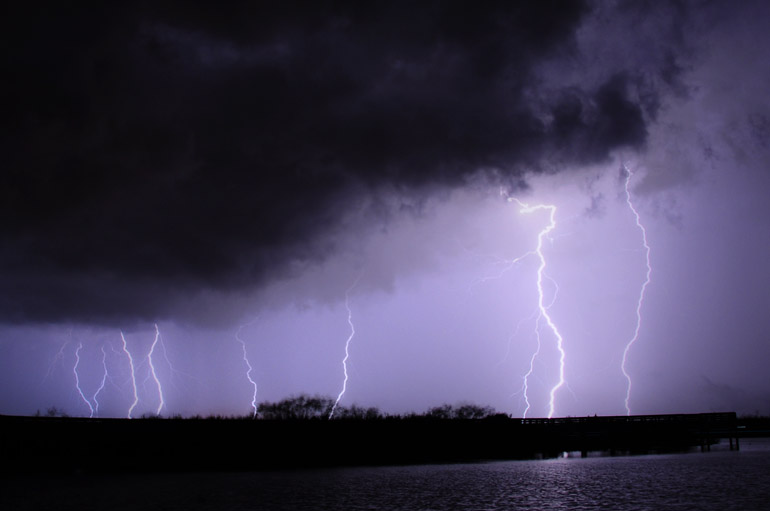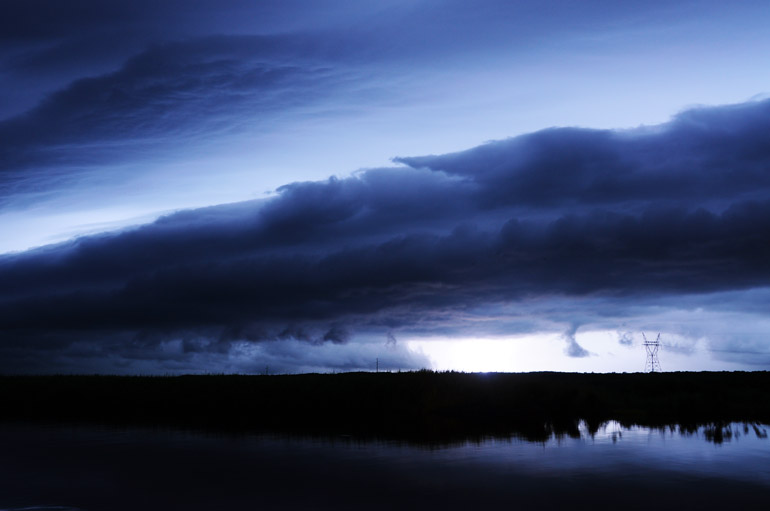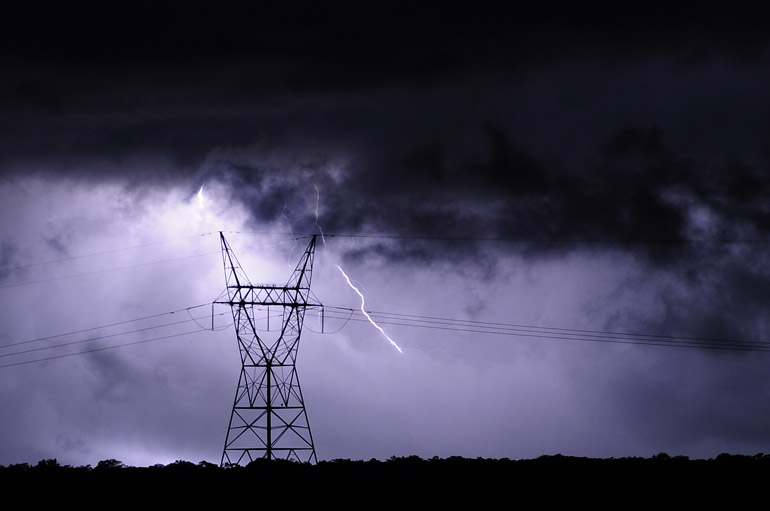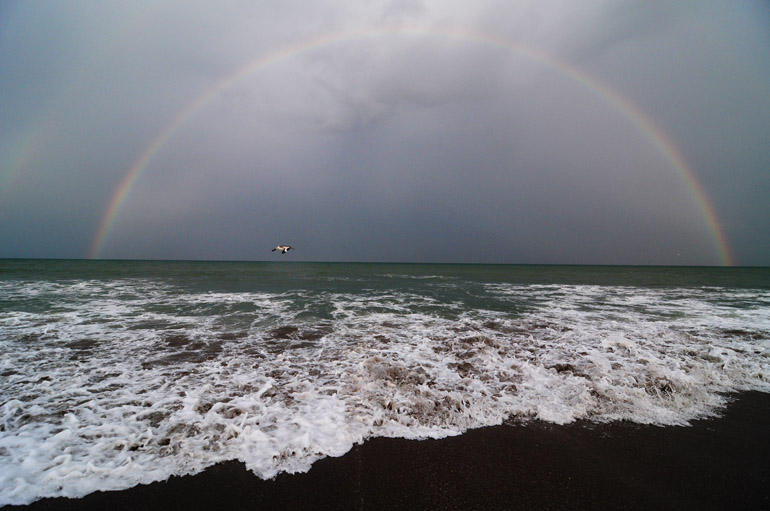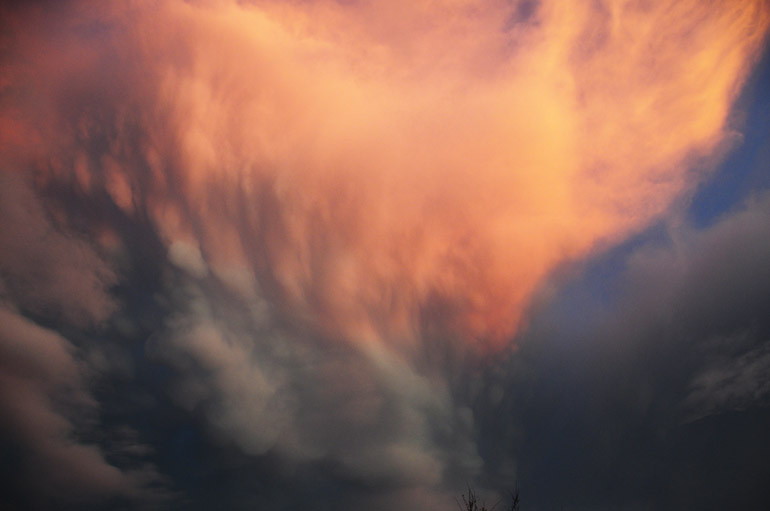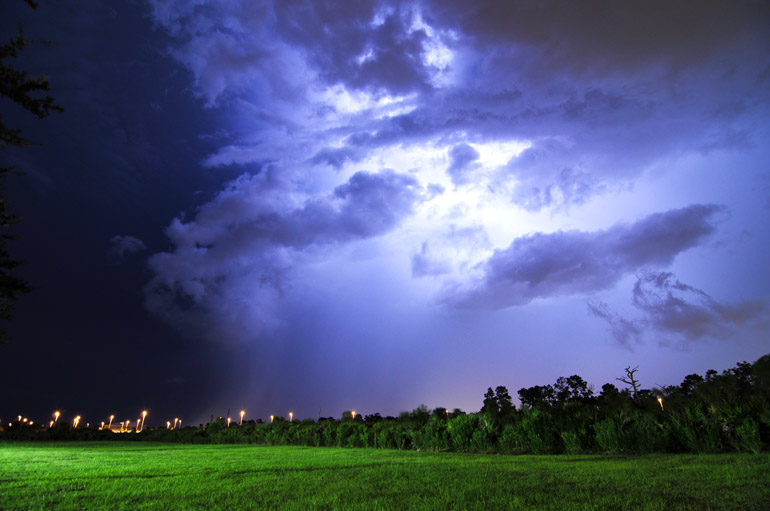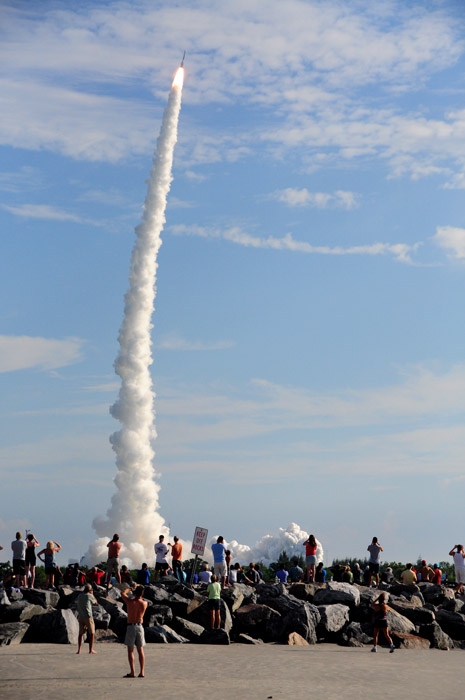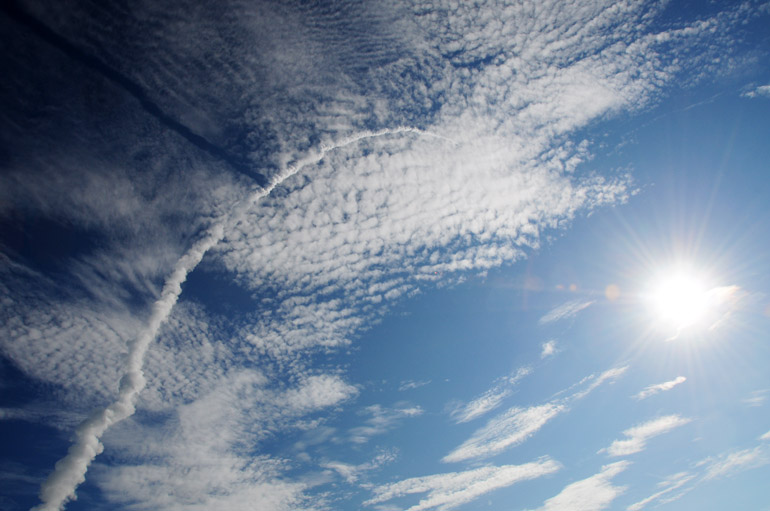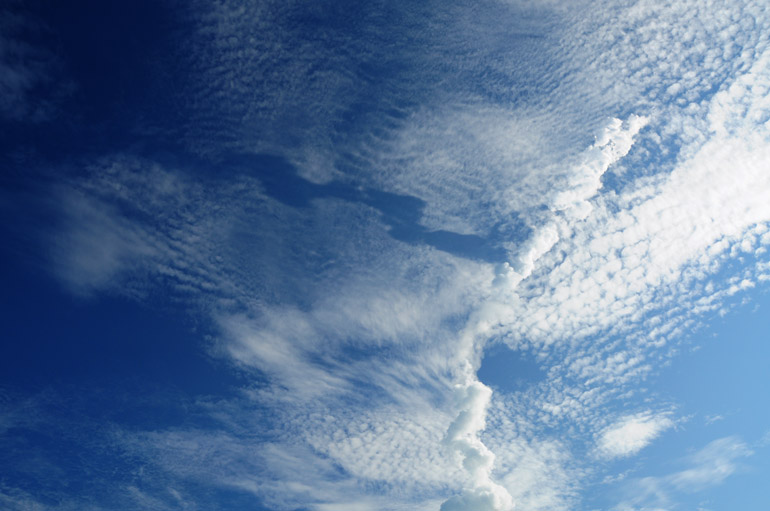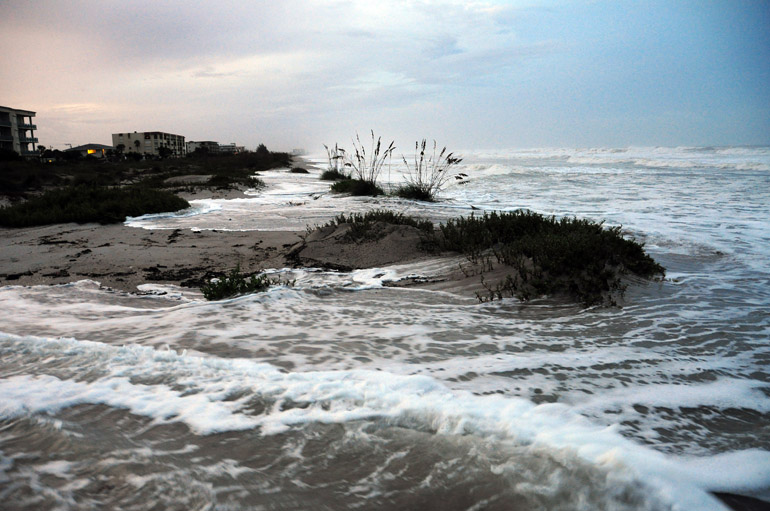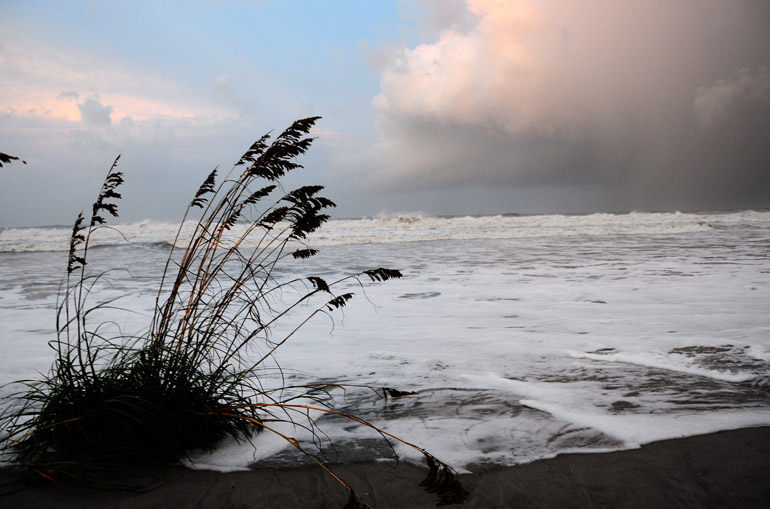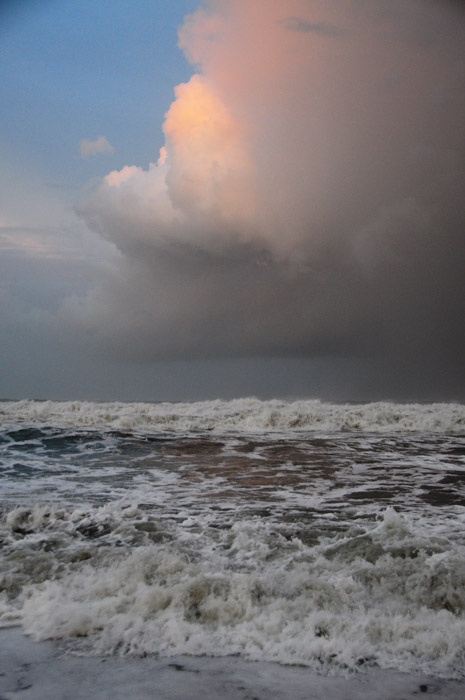I walked out of work Friday evening and checked the radar on my iPhone. It showed a big, almost stationary blob of red just to the west of Cocoa. Seemed like a good photo op for stormy clouds and lightning. The above is a composite of a few lightning photos I took over a 15-minute period at the Lone Cabbage Fish Camp on the St. Johns River.
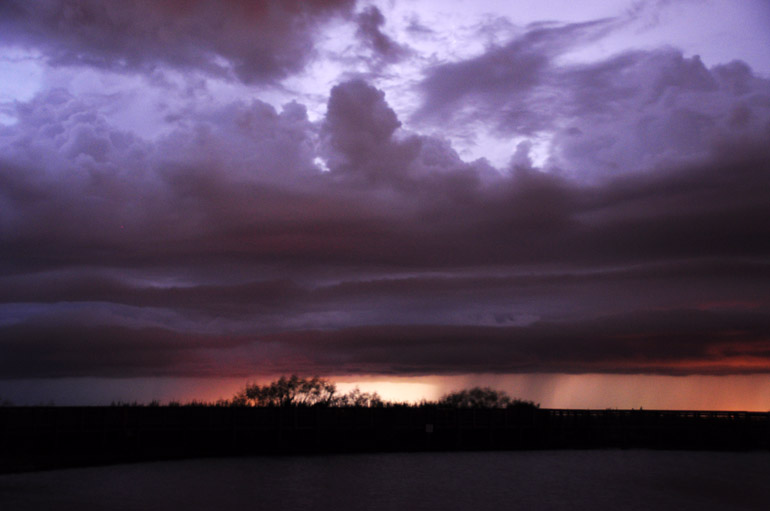
I started the evening at a park on the north side of State Road 520, which runs westward into a remote, swampy area. It had a good view of this gust front, with a somewhat red post-sunset sky in the background.
I switched to a park on the south side of State Road 520 so I could get a better view of the storm's structure. The lightning was flashing frequently, highlighting the striations in this shelf cloud. Visible bolts, however, were few and far between until the storm got closer.
This shot shows a lightning strike, but the area of the bolt is overexposed, so you can't make it out.
The green, white and red lights on an airboat that went by oddly made an Italian flag over the river's surface. Weird, huh?
I went back over to the north side of the roadway, where there seemed to be a better view of the lightning bolts.
The storm was painfully slow in moving eastward toward my location. I'm betting its clip was less than 5 mph.
I always try to focus on power towers, since they're tall, and lightning loves tall things. This was never struck, however.
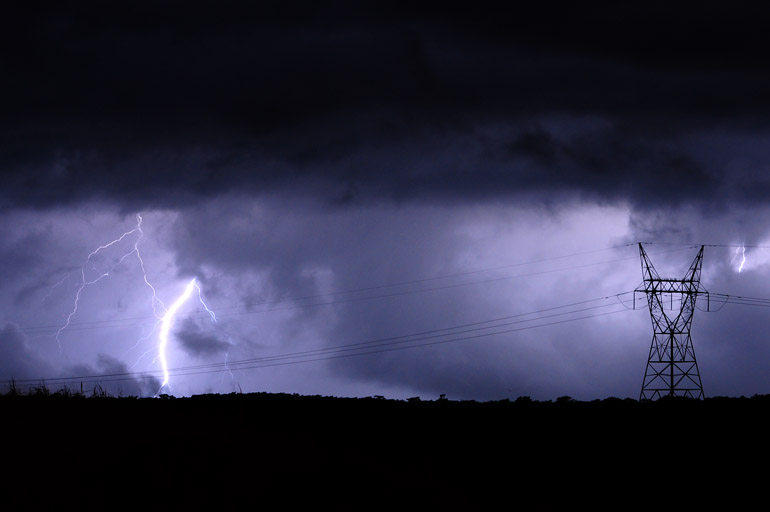
It eventually started sprinkling, and since I was exhausted from a long workweek, I called it an evening.

